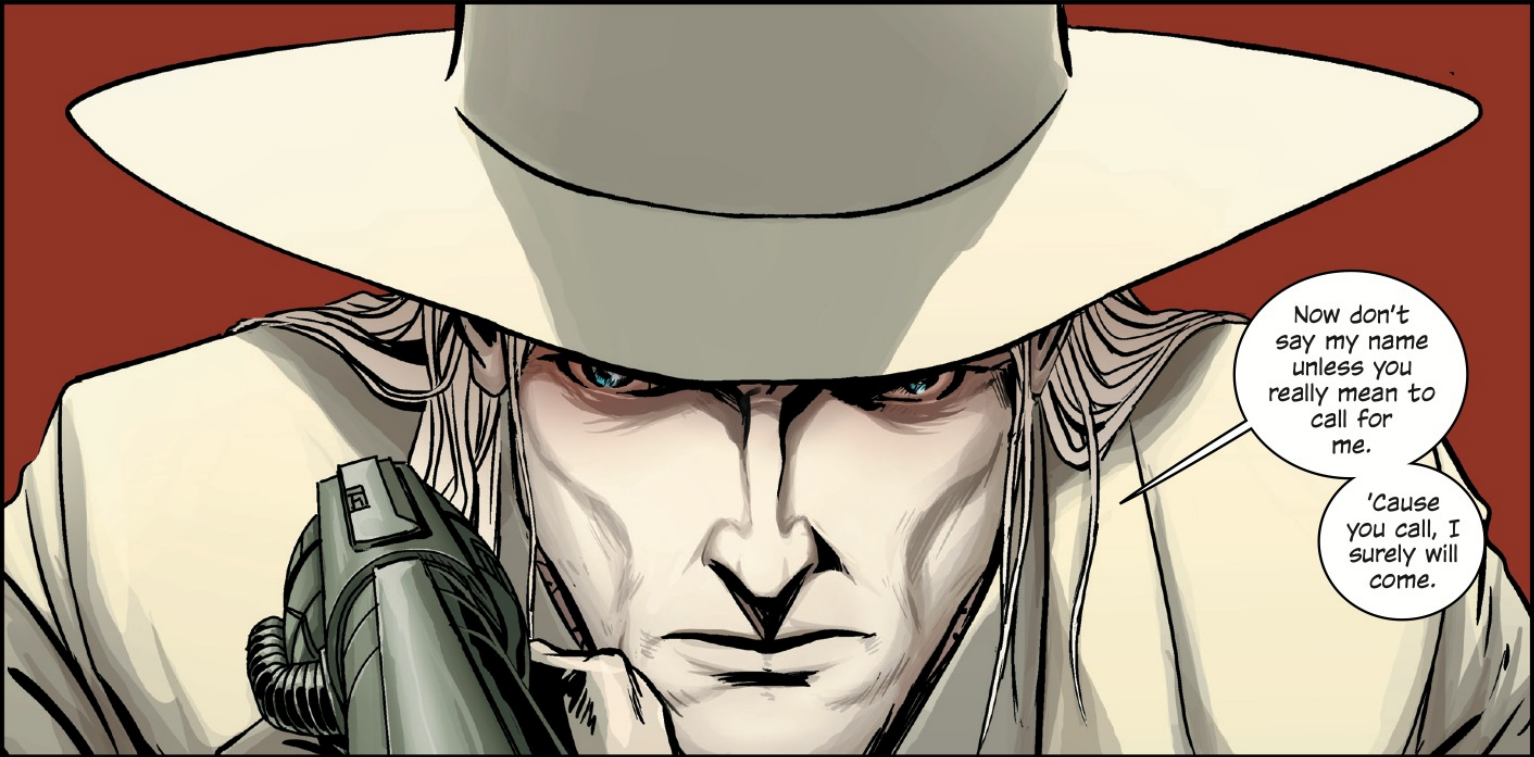
The Dissolution of Peace: East of West Vol 3
Last time we considered Hickman’s use of the themes of love, family, and fatherhood as well as introducing the world, plot, and art. The title of this third trade is “There is No Us” and on the surface, it is about the dissolution of the tenuous peace between the Seven Nations North America. But the deeper themes of this volume are that of free will vs predestination and deception. The first two issues of this volume overlap with the twelve issues I examined last time, but I will include their plot elements as I provide a quick overview of the plot. Xiaolian calls a conference of the Seven Nations at the neutral territory of Armistice. Finally in a position of power, she seeks revenge on The Chosen for kidnapping the son she had with Death. As I mentioned before, many of the Seven Nations are not run by The Chosen (although they hold positions of power) and so they attempt to avert war. A situation I will detail momentarily leads to Xiaolian getting the war she wants. The Ranger finally finds his target and kills Cheveyo. After a confrontation with Death, he agrees to take Death to the facility housing The Beast (his son). The Three Horesemen decide they’re sick of following along with The Word and will go kill The Beast. They leave Ezra in a crumbling Armistice building and head to the facility housing The Beast. As I mentioned last time, The Beast has been plotting his escape with his computing device. He defeats the Conquest and affirms his dominance. He renames himself Babylon, names his computer Balloon and the book ends on a huge “OH SHIT” moment.
